Employee movement (also known as headcount walk) refers to the flow of employees into, within, and out of an organization. It encompasses activities like hiring, promotion, transfer, and termination. Navigating this flux can be challenging without the right tools, often leading to overlooked opportunities and unnoticed trends.
What if you could effortlessly view all employee movement at a single glance?
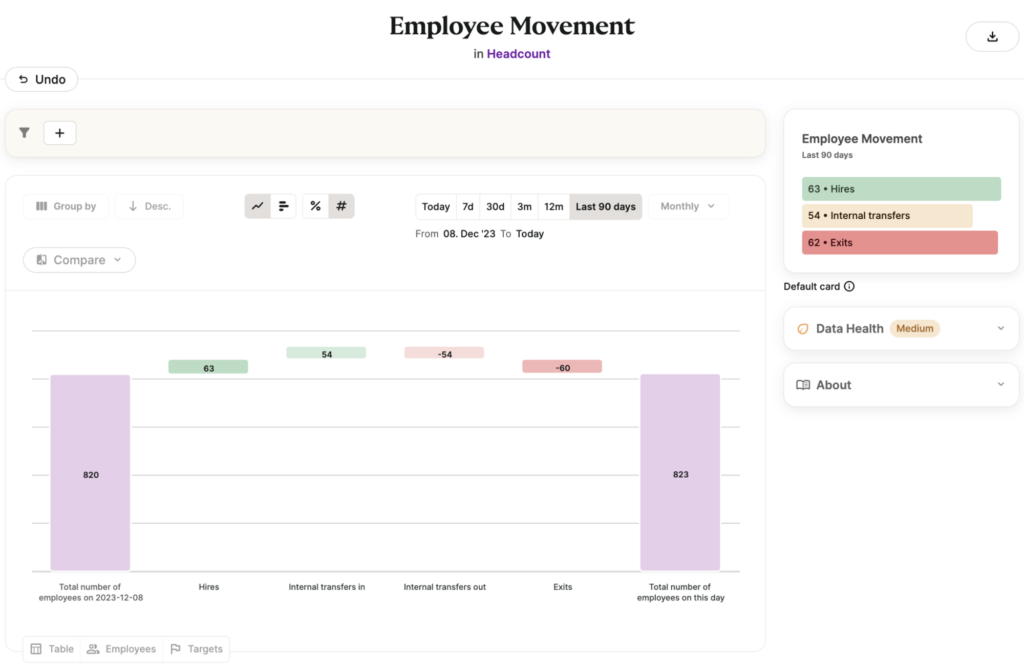
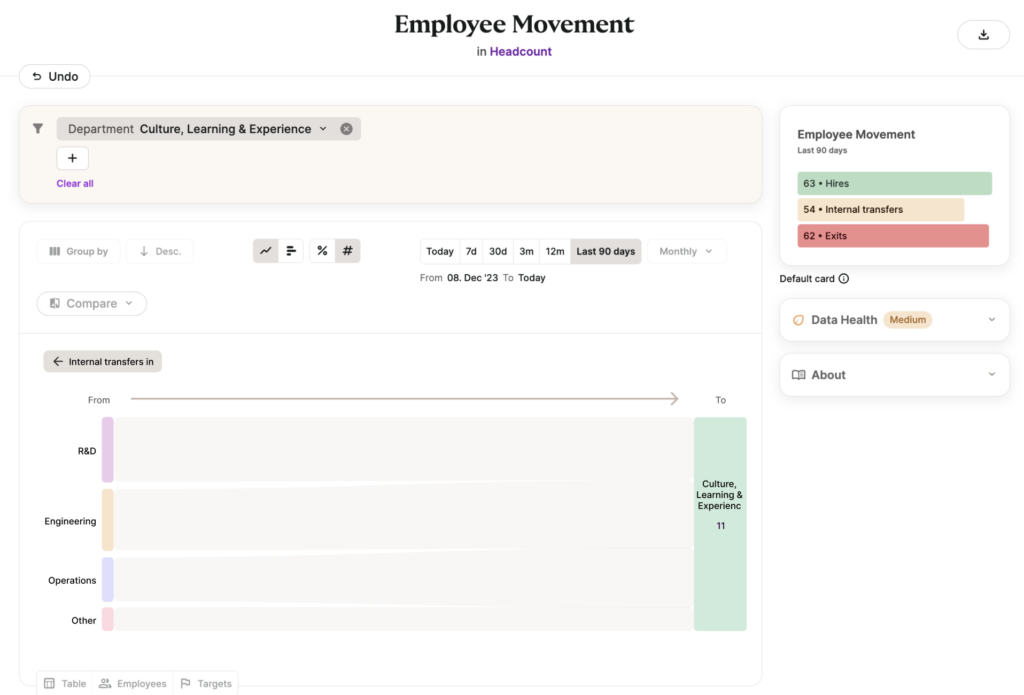
Job roles and team structures are constantly evolving, making it essential to keep track of talent movement within your organization. Understanding these dynamics is key to maintaining agility and responding effectively to shifts.
The Employee Movement Metric steps in as a valuable tool, offering insights into the ins and outs, as well as the internal shifts of employees, keeping you informed and agile. It is one of six metrics we offer in the Headcount story chapter.
This metric is a narrative of growth, transition, and opportunity. It provides a panoramic view of how talent ebbs and flows within your organization by meticulously tracking internal and external employee movements, including hires, transfers, and exits.
In this article, we’ll unveil its calculation, insights, and strategic implications. Whether you’re looking to optimize resource allocation, enhance succession planning, or simply gain a clearer understanding of your workforce dynamics, this metric is your gateway to deeper insights and more informed strategies.
The vital pulse of your organization
In essence, this metric is the pulse of your organization, offering a real-time snapshot of talent flow. It serves as a critical tool for HR professionals and leaders, enabling them to visualize the balance of hires, transfers, and exits. By understanding these patterns, organizations can anticipate needs, manage resources effectively, and plan for the future with greater confidence.
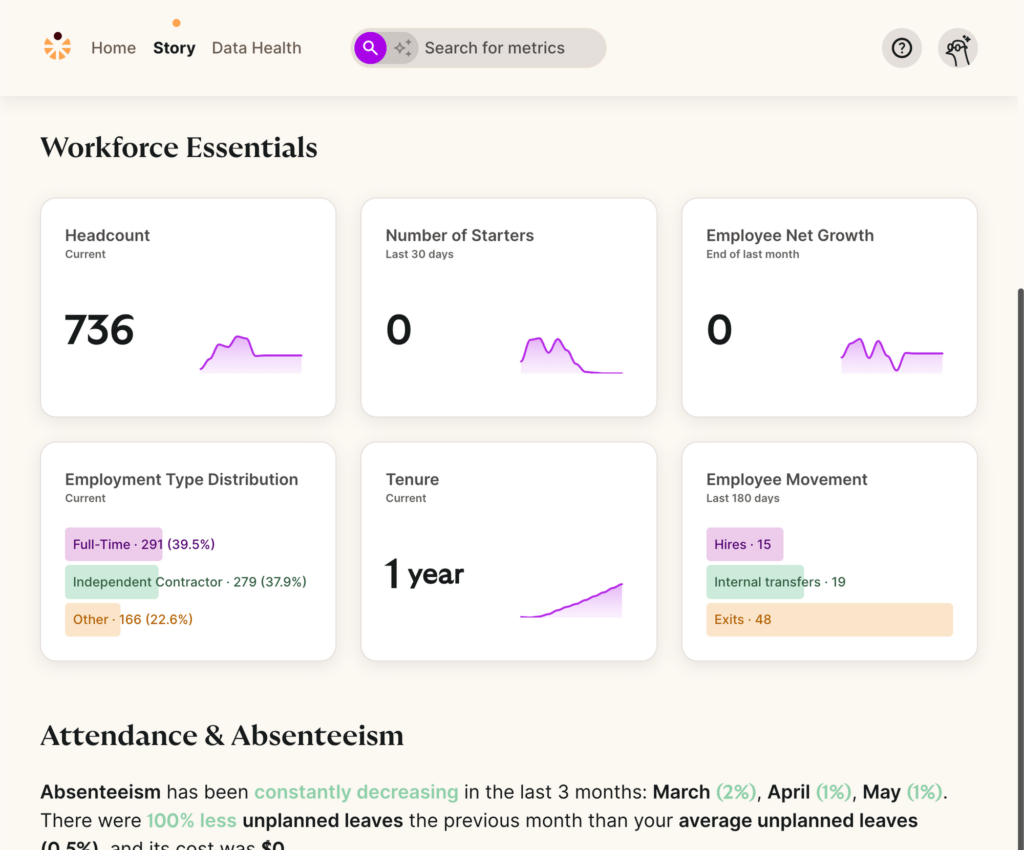
Demystifying the calculation
At its core, the Employee Movement Metric is simple yet insightful. We calculate it by counting the number of employees at the beginning and end of a selected period. The net change encapsulates new hires, departures, and internal transfers, offering a comprehensive view of talent movement.
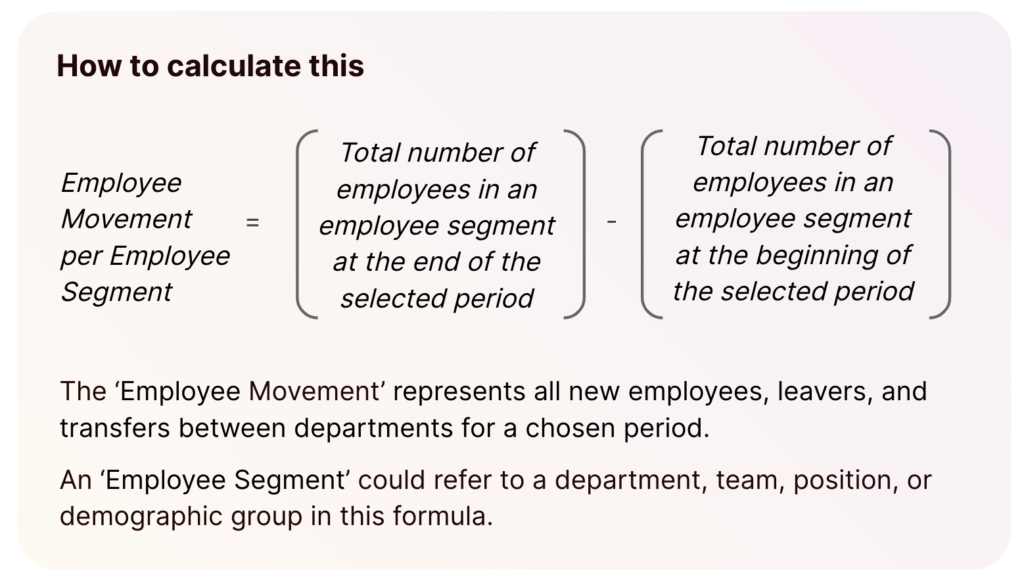
Source data: the backbone of accuracy
Our metric’s accuracy stems from robust data sources, including HR Information Systems (HRIS) and Data Filler Surveys. These tools capture critical data points such as employment dates, job histories, and exit interviews, ensuring a well-rounded view of employee movement.
Employee Movement metric is available for the following HRIS (so far):
- BambooHR
- Gecko
- Humaans
- Workday
Unveiling insights: beyond the numbers
But what do these numbers tell us? By delving into the Employee Movement Metric, organizations can uncover valuable insights.
- Rising New Hires: A consistent increase in new hires over time could point to organizational growth or expansion. However, it’s essential to balance this with quality onboarding processes to ensure newcomers are well-integrated and productive.
- Frequent Department Shifts: Regular movement of employees between departments might highlight a versatile and adaptable workforce. But it could also suggest unclear career paths or a need for better role alignment to employee strengths and interests.
- Clustered Exits in Specific Teams: If certain departments or teams are experiencing higher exit rates, this could indicate leadership issues, team dynamics problems, or unmet employee expectations within those groups.
- Patterns in Exit Stages: Identifying when employees tend to leave, such as within the first year or after a specific milestone, can help pinpoint critical periods for intervention to enhance retention.
- Diversity in Internal Mobility: A lack of diversity in those moving internally may reveal unconscious biases in promotion or transfer opportunities, calling for a more equitable approach to career development.
A tour of available toolbar views
Our platform brings this metric to life through intuitive visual representations:
Timeline View – Waterfall Chart: Observe how employee numbers fluctuate for a selected time period, offering a clear visual of growth or contraction.
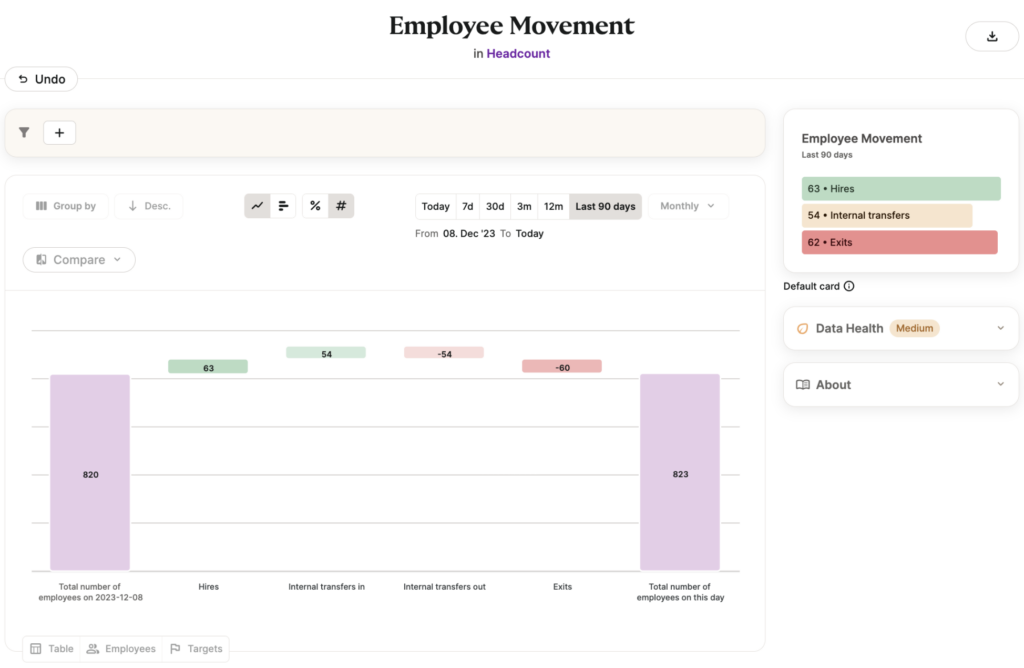
Breakdown View: Delve into the specifics of hires, transfers, and exits. This view is particularly enlightening when examining departmental or role-specific trends.
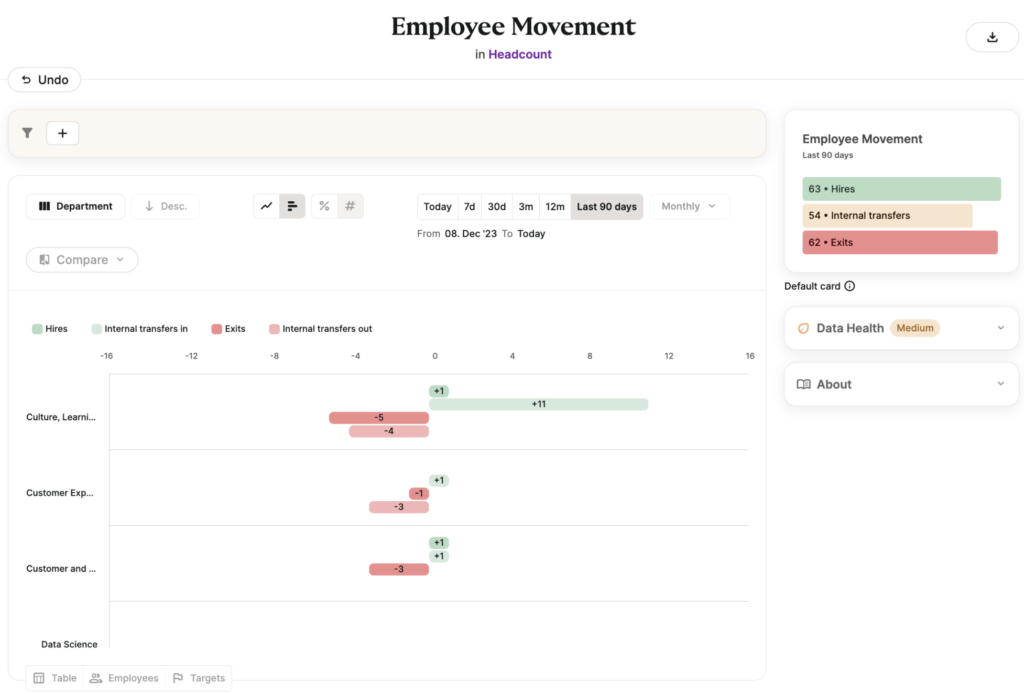

Deep-dive View: A click on the chart unveils a detailed breakdown, illustrating the journey from the start date through various changes to the end date.

Benefits of analyzing workforce shifts
- Source of Talent: You can see where all your great new hires come from, and which companies they’ve moved on from, and use this super helpful data to make your recruitment strategies even better.
- Destination Insights: Keep track of where employees head off to after they leave your organization. This provides valuable insights that can help improve retention and make your talent development efforts even more effective.
- Internal Mobility: Keep tabs on internal transfers to spot any potential skill gaps, opportunities for career progression, and trends in departmental movement.
- Cross-Departmental Flow: You can analyze out the flow of movement between departments to fine-tune team collaboration, resource allocation, and the overall structure of your organization.
- Succession Planning: Spot talent pools and rising stars in your company and keep an eye on their career path to help nurture the leaders of tomorrow and ensure your business keeps running smoothly.
Conclusion: the metric that moves with you
The Employee Movement Metric empowers you to understand and anticipate changes, craft strategic responses, and foster a culture that not only adapts but thrives on its people’s inherent dynamism. Embrace the insights it reveals, and you’ll unlock a new realm of strategic foresight, turning the natural flux of your talent pool into a powerful catalyst for organizational success.